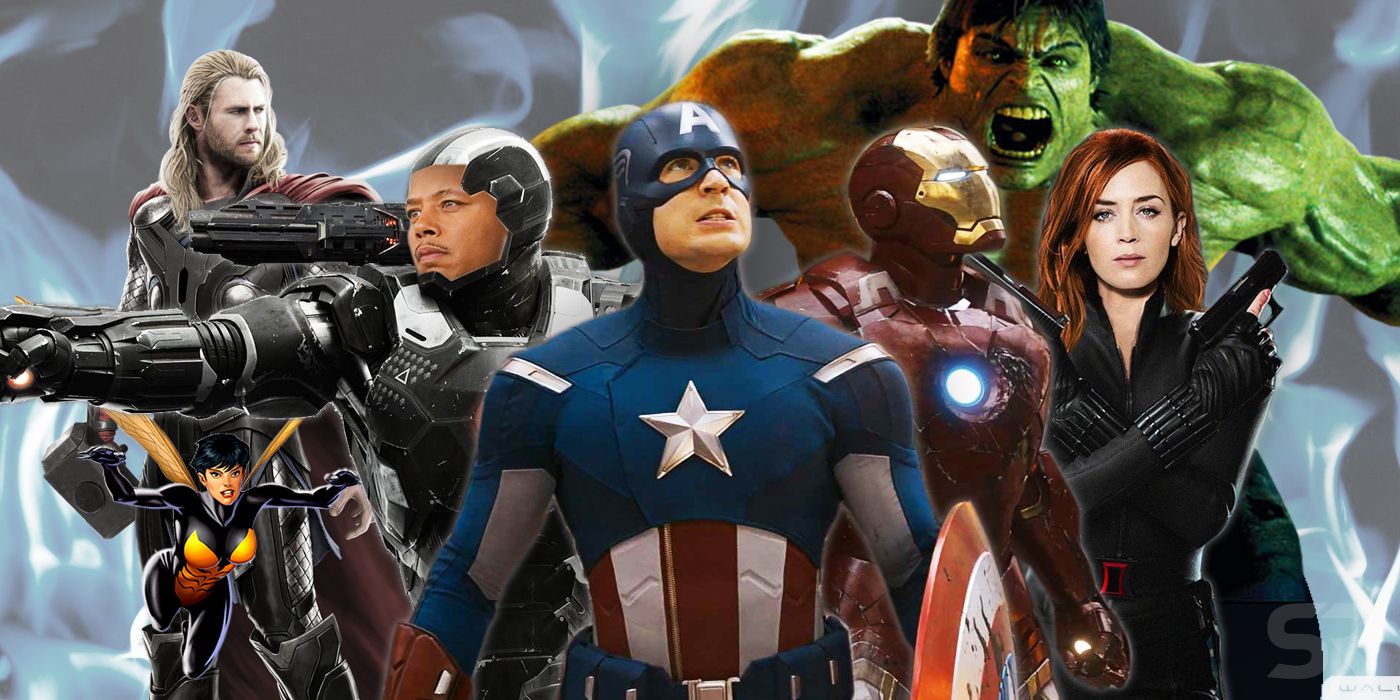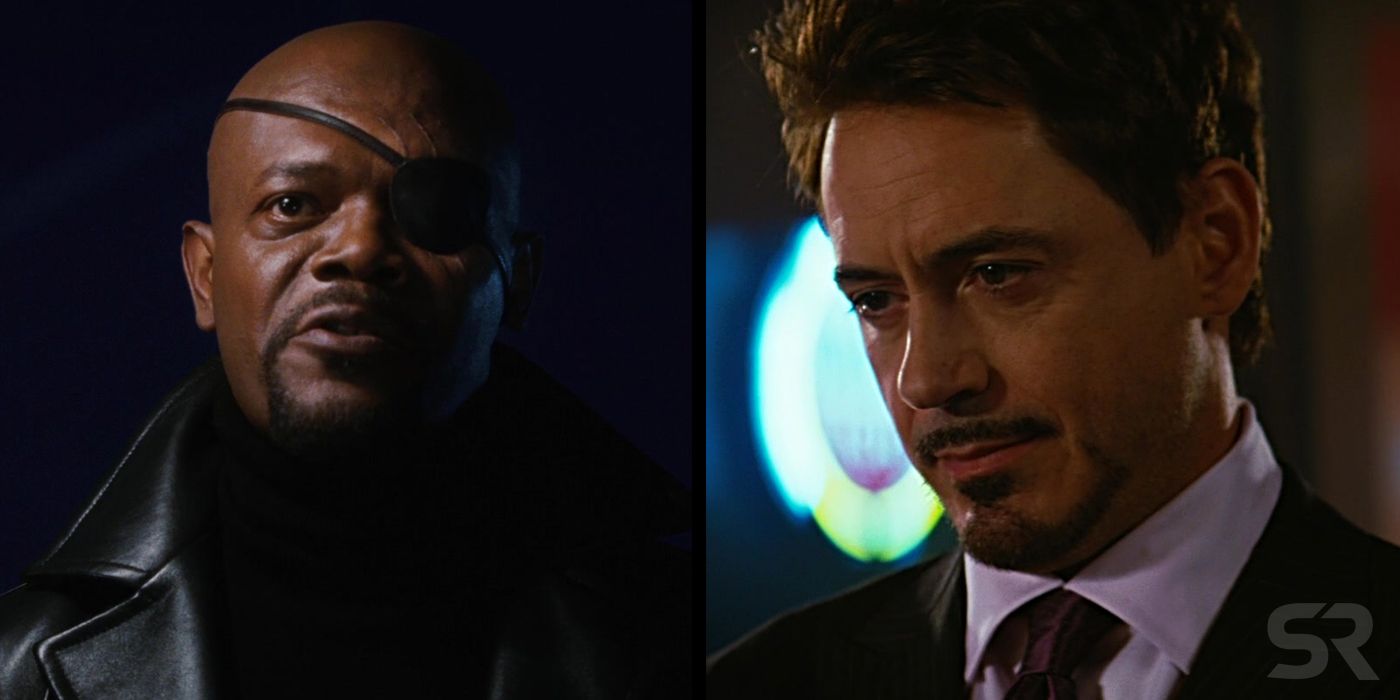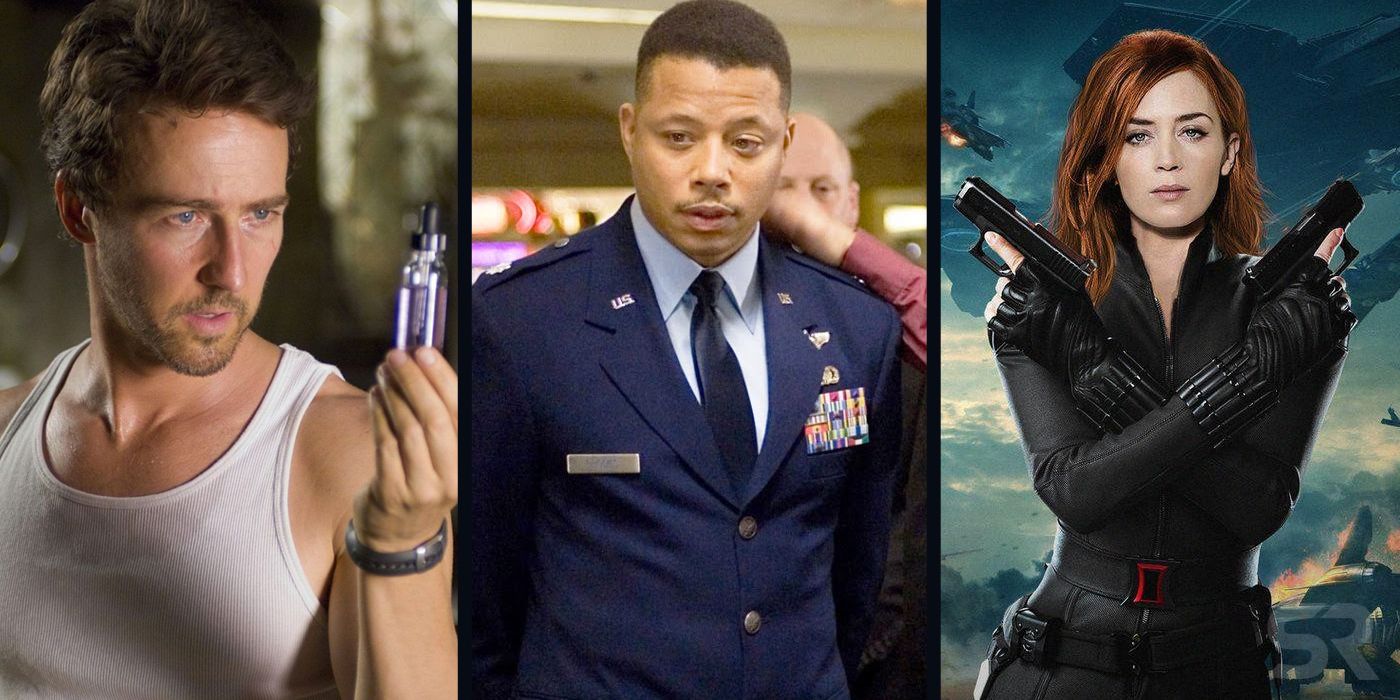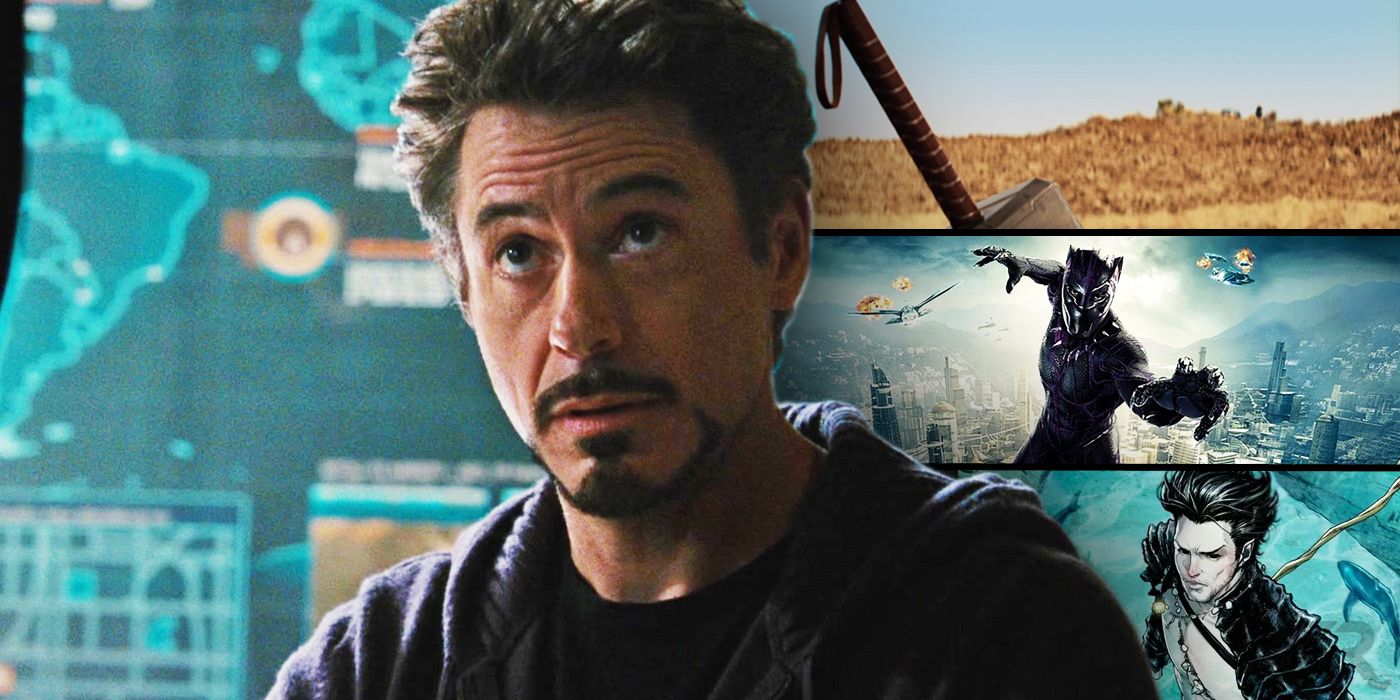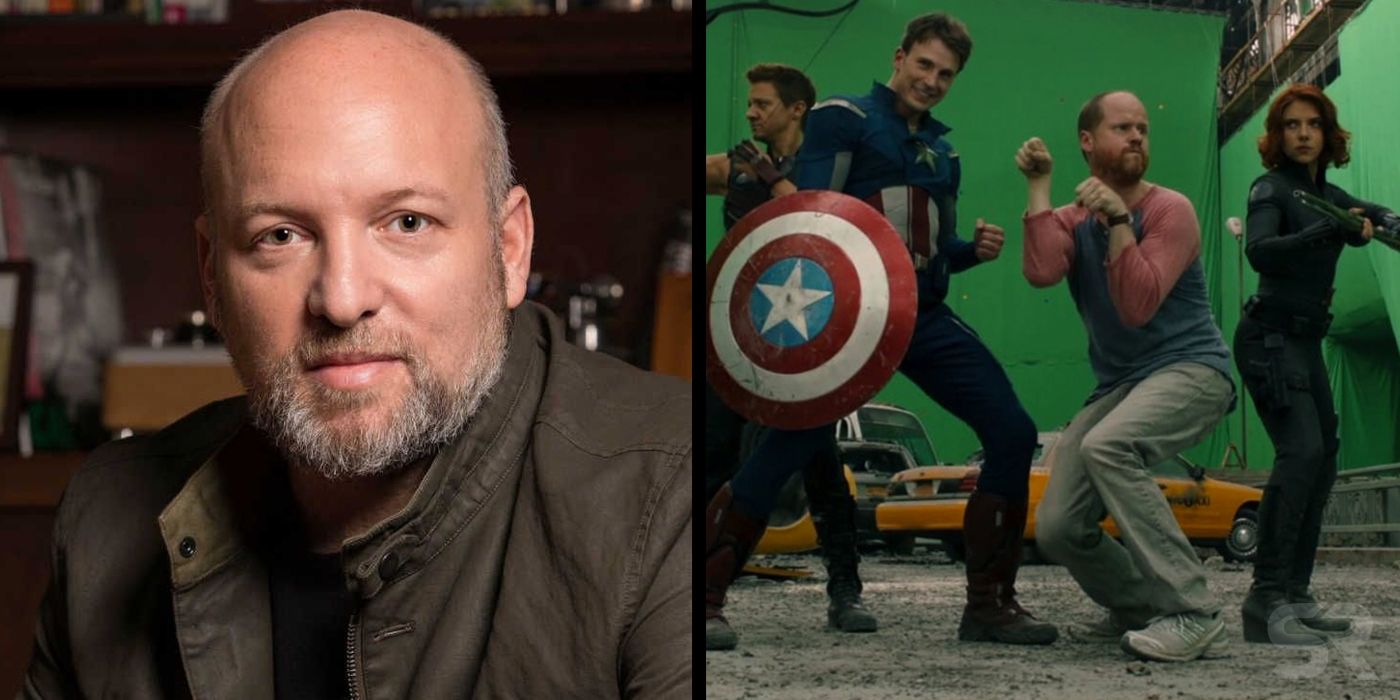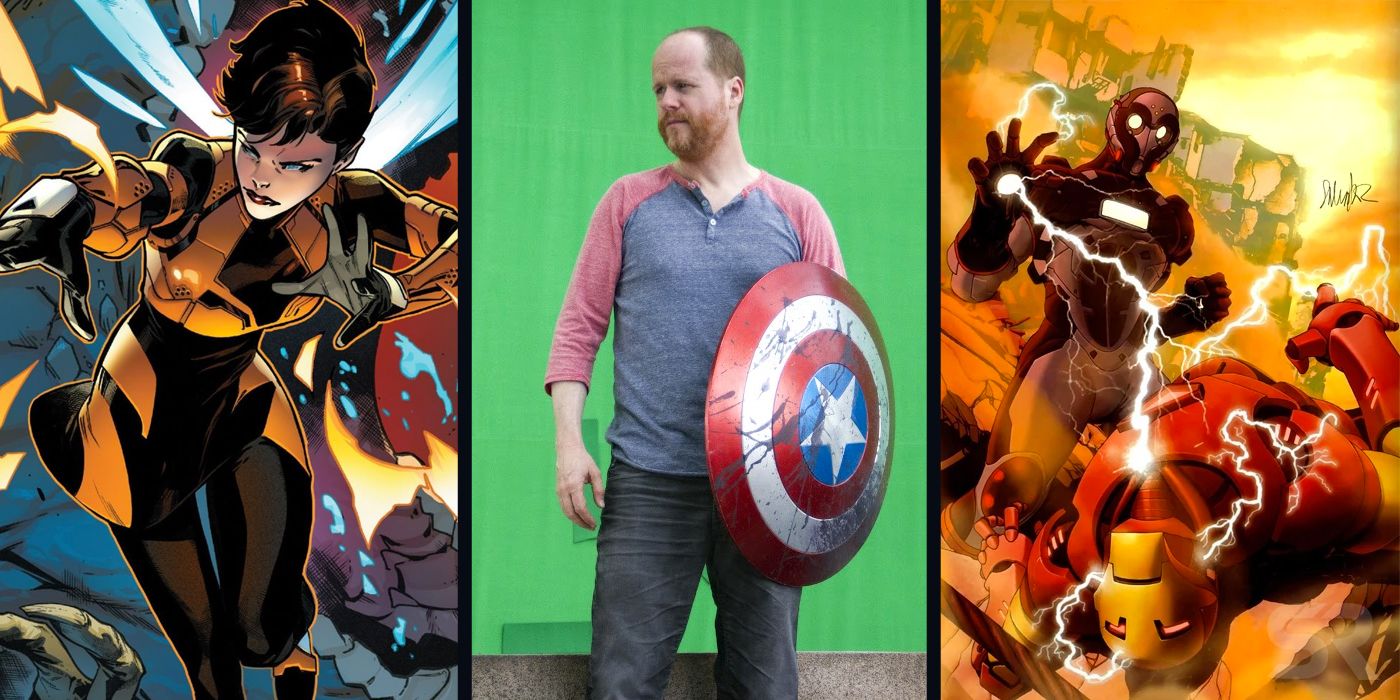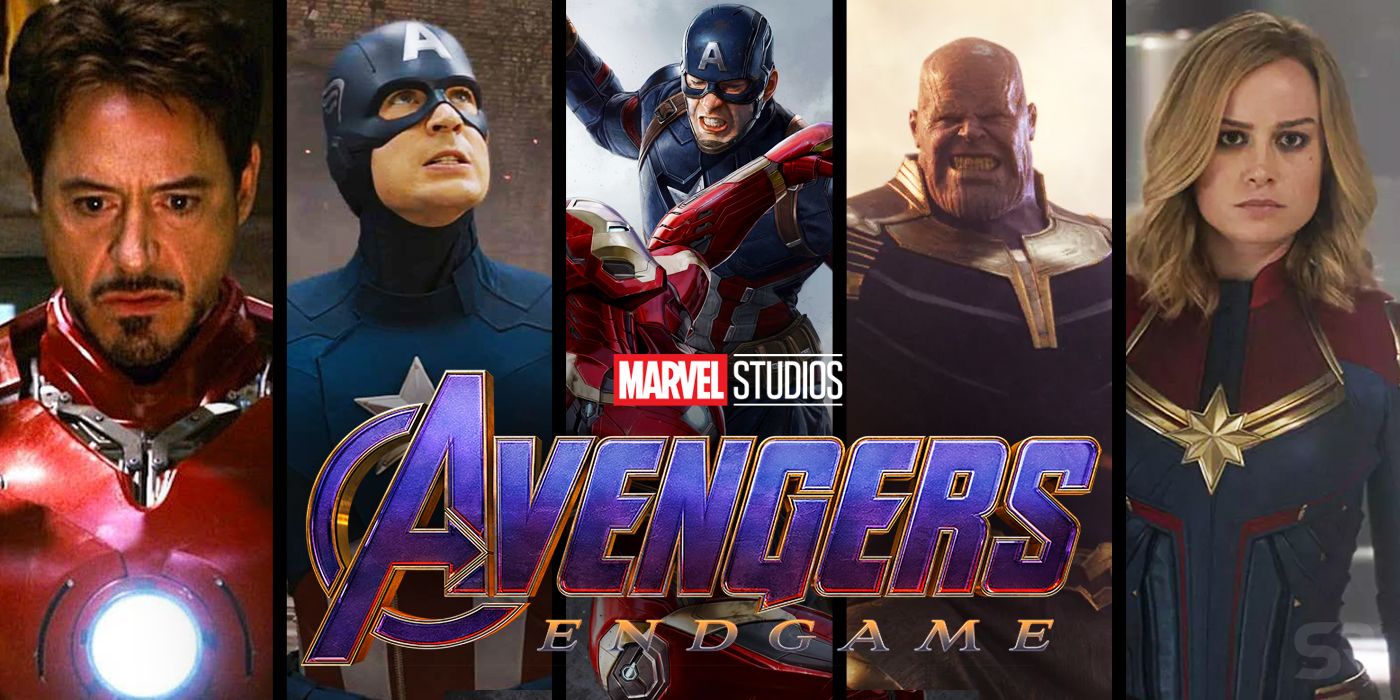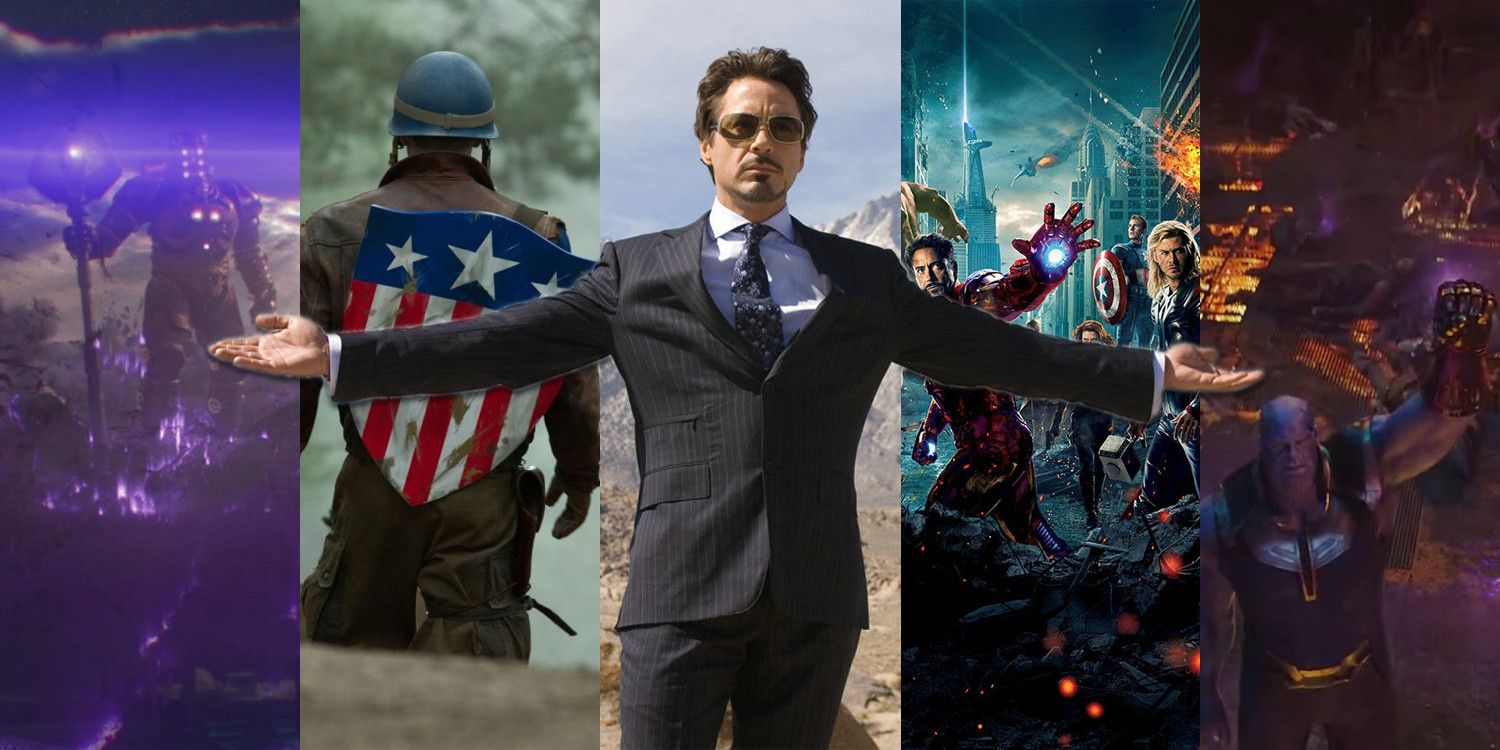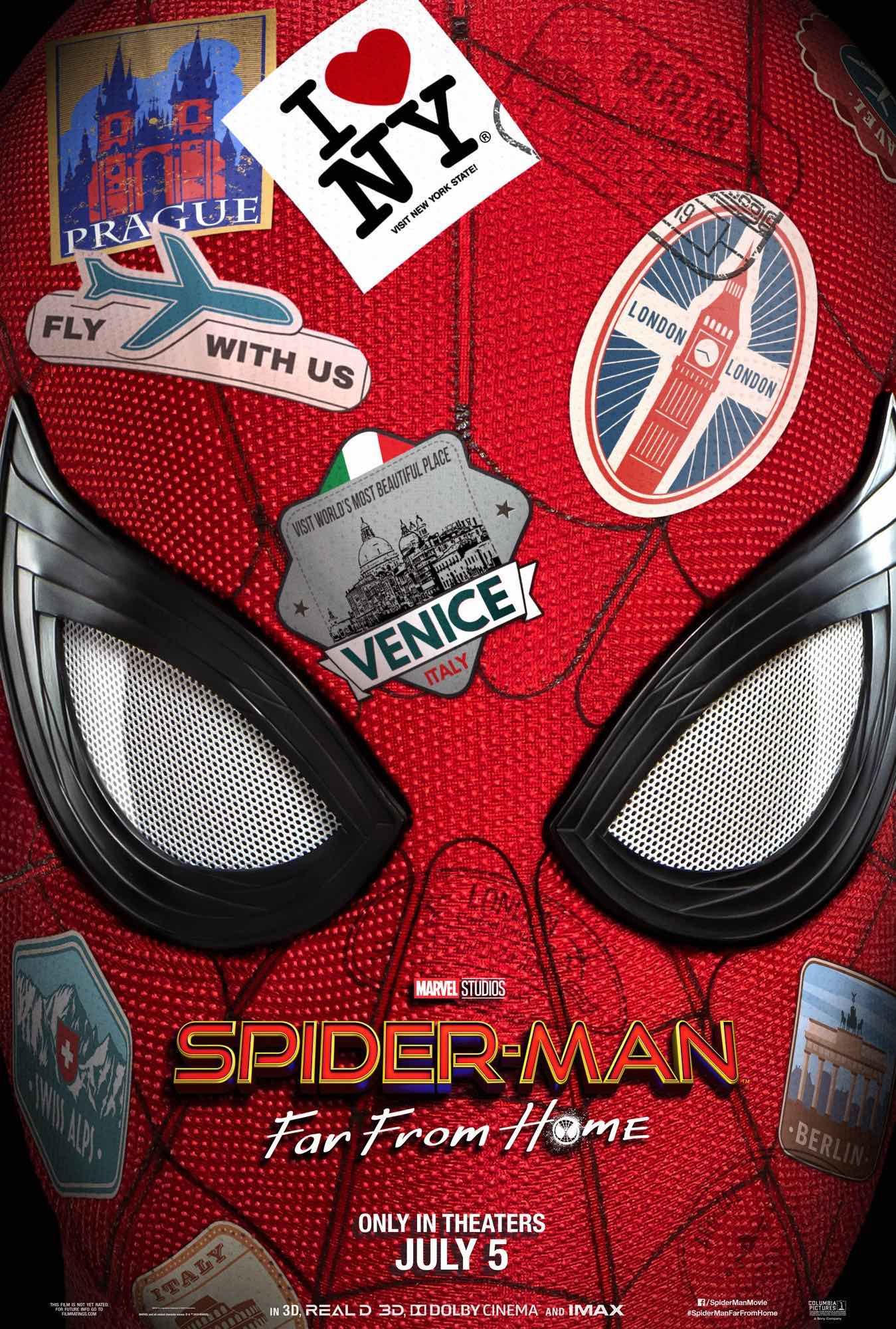Marvel Studios original plan for its shared universe culminated with a very different version of The Avengers. Now Avengers: Endgame brings the storylines of those original heroes to fitting conclusions, it's easy to view the whole Marvel Cinematic Universe as a masterclass in planning. What it actually is, though, is testament to how often the best stories come from freewheeling.
Indeed, while it may now feel like the MCU was always on a road that ended in Thanos, it really wasn't always the plan. The Avengers' mid-credits tease of the Mad Titan was a last minute decision by Joss Whedon, who had no idea where it would eventually lead, and the firmament of the story wasn't laid down until years later. Eventually, a variety of random aspects - the Tesseract being the Space Stone, Loki's scepter being the distinct Mind Stone, the Infinity Gauntlet Easter egg in Odin's vault - had to be retconned.
But to even get to that point, Marvel Studios and Kevin Feige had been through various iterations of their Avengers Initiative. Make no mistake, the endgame of the MCU's Phase 1 always was The Avengers - it was part of the original funding for Marvel Studios in 2005 and had a release date set for 2011 before being pushed back a year - but what Earth's Mightiest Heroes could have looked like was almost very different.
- This Page: Iron Man Promised A Different Avengers Movie
- Page 2: How Joss Whedon Entirely Rewrote The Original Avengers Script
- Page 3: How The Avengers Changes Shaped The Entire MCU
Iron Man & The Incredible Hulk Were Setting Up A Different Avengers
The first proper inkling of The Avengers plan in the MCU comes during the post-credits scene for Iron Man. The movie itself is deceptively standalone, with only a running gag about S.H.I.E.L.D.'s pre-acronym name (that really is more send-up rather than set-up) to hint at a wider universe. Then, tucked away at the end of the credits in a time where, X-Men: The Last Stand aside, stingers were typically gags, Samuel L. Jackson's Nick Fury emerged from the shadows and offered Tony Stark a place in his Avengers Initiative.
The tease was just that, a tease, and like Thanos four years later a rather last-minute addition without any firm plans. But any doubt this was just a comic wink were tossed aside a couple of months later when, in The Incredible Hulk's credits tease (moved to the start, likely out of fear of it being missed) Tony Stark approached General Ross about the team he was putting together.
It's scraps, but a clear skeleton of The Avengers can be seen. Tony Stark is brought in to lead the team, possibly to track down the awol Hulk in a story akin to The Avengers #1 from 1963. In that simple story, Loki attempted to escape exile by manipulating the Hulk into accidentally destroying a bridge, but inadvertently unites Thor, Iron Man, Ant-Man, Wasp and the Green Goliath, who following the God of Mischief's defeat form a superteam.
Of course, what's teased in these early movies is not quite The Avengers we got; Tony would be shuffled away from the team and only brought back in at peak desperation, while the Hulk was incredibly different come 2012. What these two 2008 movies imagined doesn't match up with what was to come, serving as untarnished proof of how things changed.
The Originally Envisioned Avengers Cast Was Different Too
Not only is the early Avengers roadmap leading to a different story, it's got different people in the driving seat. This is more well-known given how recasting, even when downplayed, is hard to miss. Due to pay disputes, Terrence Howard was replaced as James Rhodes in Iron Man 2 onwards by Don Cheadle, explained away with a simple "Look, it’s me, I’m here. Deal with it. Let’s move on." Then, in The Avengers, Mark Ruffalo took on the role of Bruce Banner and Hulk following creative differences between Marvel and Edward Norton (as well as being part of a noticeable attempt to distance the MCU from The Incredible Hulk in general).
But the changes don't end there. Emily Blunt was originally set to play Black Widow - she was Iron Man 2 director Jon Favreau's first choice - but had to step down when Fox exercised a contract clause from The Devil Wears Prada to have her star in Gulliver's Travels. Scarlett Johannson, who did have a screentest previously, then stepped up.
None of these situations would have had as direct an impact on the story as the writers or directors we'll see (at least not until later, when characters like Hulk and Stark were more tailored to the performance), but all these adjustments did have an impact in development and play a part in reshaping how the burgeoning MCU could have looked.
How Iron Man 2 Started A Pivot
It's at Iron Man 2 in 2010 when you can see a distinct change in the MCU Phase 1 plan. The movie's wider-universe arc changes course for Tony Stark, with Black Widow assessing his performance and deciding he was unfit as a team member. This undoes both credits scenes in the previous movies, which due to the non-linear timeline of MCU Phase 1 (Iron Man 2, Thor and The Incredible Hulk all happen around the same time, dubbed Fury's Big Week) created something of a plot hole. This was plugged by Marvel One-Shot The Consultant, which showed Stark's approach to Ross was actually a ploy by S.H.I.E.L.D. to trick the General into keeping Abomination locked up (these post-movie retcons were a thing until the early days of Phase 2).
By the time of Thor in May 2011, key aspects of The Avengers are being introduced that fit with genuine setup, although there are still several confusing aspects. That movie's post-credits scene features Selvig being approached by Nick Fury deep in Project Pegasus about working on the Tesseract (which had already been teased via drawings in Iron Man 2), only for a presumed-dead Loki to emerge in a reflection in control of the physicist. This is closer to The Avengers - Loki does mind control Selvig and the Tesseract is the core MacGuffin - but for the God to already be on Earth directly contradicts his later introduction. Whatever the confusion there, when Captain America: The First Avenger released in July 2011, everything seemed cohesive; Asgard namedrops, Stark supporting roles and Tesseract teases all slot neatly in the narrative.
The reasoning behind this rather convoluted switch-up - especially considering how Tony would be called upon again in The Avengers' first twenty minutes - is down to the bigger production picture. Zak Penn had been working on a script for The Avengers since 2006 and been adjusting the plan constantly over the next half-decade as directors enacted influence and characters began to fully form. This is where the fluctuations, especially regarding Tony Stark, appear to have come from; Penn's first draft was submitted in early 2010, a few months before Iron Man 2's release and almost four years after he stated. But things fundamentally changed shortly after once the movie found a director.
Page 2 of 3: How Joss Whedon Entirely Rewrote The Original Avengers Script
Why The Original Avengers Script Changed
We don't know much about Zak Penn's script for The Avengers, especially not its various iterations that reportedly included Red Skull and were open to failures of Phase 1 standalones. But we can safely say it's rather different - at least tonally - from what was released. While it's commonly said that Whedon "rewrote" Penn's original draft, that phase makes his now-infamous changes to Justice League look minor. By the director's own admission (via GQ), "There was a script. There just wasn't a script I was going to film a word of." When he signed on officially in April 2010, it was as writer-director, and he set about the former aspect of that immediately, dismissing Penn's screenplay entirely.
Per Whedon, the narrative brief for his script was simple: the Avengers are fighting Loki, they fight amongst themselves in the middle, and there's a big battle against the villains at the end. Presumably - and, considering that isn't an insufficient summary of The Avengers #1 - this will have been a similar brief to what Penn was working on. This means that, while the narrative drive was different, the core building blocks were surely there from the start (give or take a Johann Schmidt).
The big problem Whedon had with the initial script wasn't story, however, but character. He found Penn's version lacked a proper spark between the various heroes, something that the ensemble-favored writer knew would be the film's make-or-break aspect. Had an earlier draft been used, it's quite likely that The Avengers would have been a more conventional affair; the finished movie was a refreshing success because it was full of Whedon-ism and was opposite to what blockbuster filmmaking was at the time (it released just three months before Christopher Nolan's The Dark Knight Rises).
How Joss Whedon's Avengers Could Have Been Different
Joss Whedon didn't just come on and write The Avengers as released, of course. He went through countless different ideas in the year between joining up and camera's rolled, many of which he discussed openly when the film released.
At one point, when it looked like Scarlett Johannson may not return due to the terms of her hasty Iron Man 2 contract (hence why casting is an important concern), he wrote a key role in for Wasp, a founding member in the comics. This never went further than the iterative process, but could have had major ramifications; it would not only have introduced Janet van Dyne (presumably) three years ahead of Ant-Man and six before her actual debut, it would have altered the story those movies - at this point the first was still going to be Edgar Wright - could tell regarding the Hank Pym-Hope van Dyne-Scott Lang relationship.
Another draft paired Loki with Ezekiel Stane, son of Iron Man's Obadiah, after Whedon worried whether Tom Hiddleston could convince as a singular primary villain. While not much more is known, a connection to Tony Stark's original antagonist would have surely shifted the scales towards this being something of an Iron Man 3 With Pals. Indeed, this attests to a general uncertainty about Thor - Penn had previously tried to downplay the God of Thunder - and his place in the team, somewhat ironic given his position as the most popular Avenger by the time of Infinity War.
One hero whose role was - subtly - adjusted rather late in the day was Captain America's. He's the undoubted leader of Earth's Mightiest Heroes come the end of The Avengers, but several key scenes from the start highlighting him as a man out of time (including context for Ashley Johnson's waitress and a Stan Lee cameo) were cut, backloading his role. While it's never been directly commented on, this may be a result of The First Avenger being the second-lowest grossing film in the MCU both domestically and worldwide (behind The Incredible Hulk) and thus representing a careful play with the character until he had the likes of Iron Man to spar with.
Page 3 of 3: How The Avengers Changes Shaped The Entire MCU
How These Changes Shaped The Entire MCU
It's easy to look back on a time when industry professionals questioned whether bringing multiple characters from different franchises together could work and feel like it's all the production tribulations of an era with no relevance to the modern day. But it's all these choices that have led to the more synergized shared universe and comic book focus that defines current movies in the first place.
Of course, different actors would have led to different stories. Terrence Howard's continuation would have likely pushed War Machine into a more focal position given his initial Iron Man deal had him as the star. It's harder to gauge with Edward Norton given how his single credit is now a black sheep, although given his drive for creative control, it's unlikely he'd have been as good a fit in the Marvel machine as Mark Ruffalo (and there's no denying that Ruffalo made Bruce Banner a true star and gave Hulk some greater personality, opening up new story opportunities).
The most pervasive impact of these changes is, ironic given how blatantly turbulent the story process was, how Whedon altered the tone. Kevin Feige ensured the Phase 1 Marvel movies had a comic book feel, but it was only with Whedon's snappy dialogue where the interactions between the heroes, and what would come to be known as "Marvel humor", was truly popularized. We know this from the director's complaints about the original Avengers script, and can see it in the movies that followed. After Iron Man 3 had Shane Black comedy, the movie's hewed considerably more Whedon, with self-deprecation the order of the day; by the time James Gunn, who perhaps best defined the balance, delivered Guardians of the Galaxy, the rule held.
But don't let that distract from how Whedon marked a bigger seismic change. He pushed out Penn who had been with the MCU since the very beginning, and with it removed the bastillion of narrative consistency. Penn had been attempted to tie the universe together into a coherent way with The Avengers, and while a lot was already wrong with continuity early on, it's possible him continuing forward could have seen Marvel put greater stock on the true interconnectivity: today, while movies exist in the same world, the micro-continuity is full of errors.
And without Whedon coming in, there may not have been any Thanos. While Infinity Gauntlet was certainly a prime story ripe for plundering in a shared universe of movies based on Marvel Comics, it didn't become the endgame until The Avengers and the unplanned decision to put the Mad Titan in the mid-credits scene. Before then, Thanos was a relative unknown (it was years later when the correct pronunciation of his name was roundly accepted) and the subsequent retcons in the Infinity Saga make the road to the Avengers look positively planned.
-
Marvel may have come out of the gate swinging with Iron Man and by the time came to actually assemble The Avengers had built up enough audience positivity the endeavor actually had a shot at making it work, but that exponential rise of Phase 1 was far from an orchestrated masterplan or even an intended acceleration. Every step along the way was into unknown territory, and for all the formula, those distinctions are right there in the movies.

